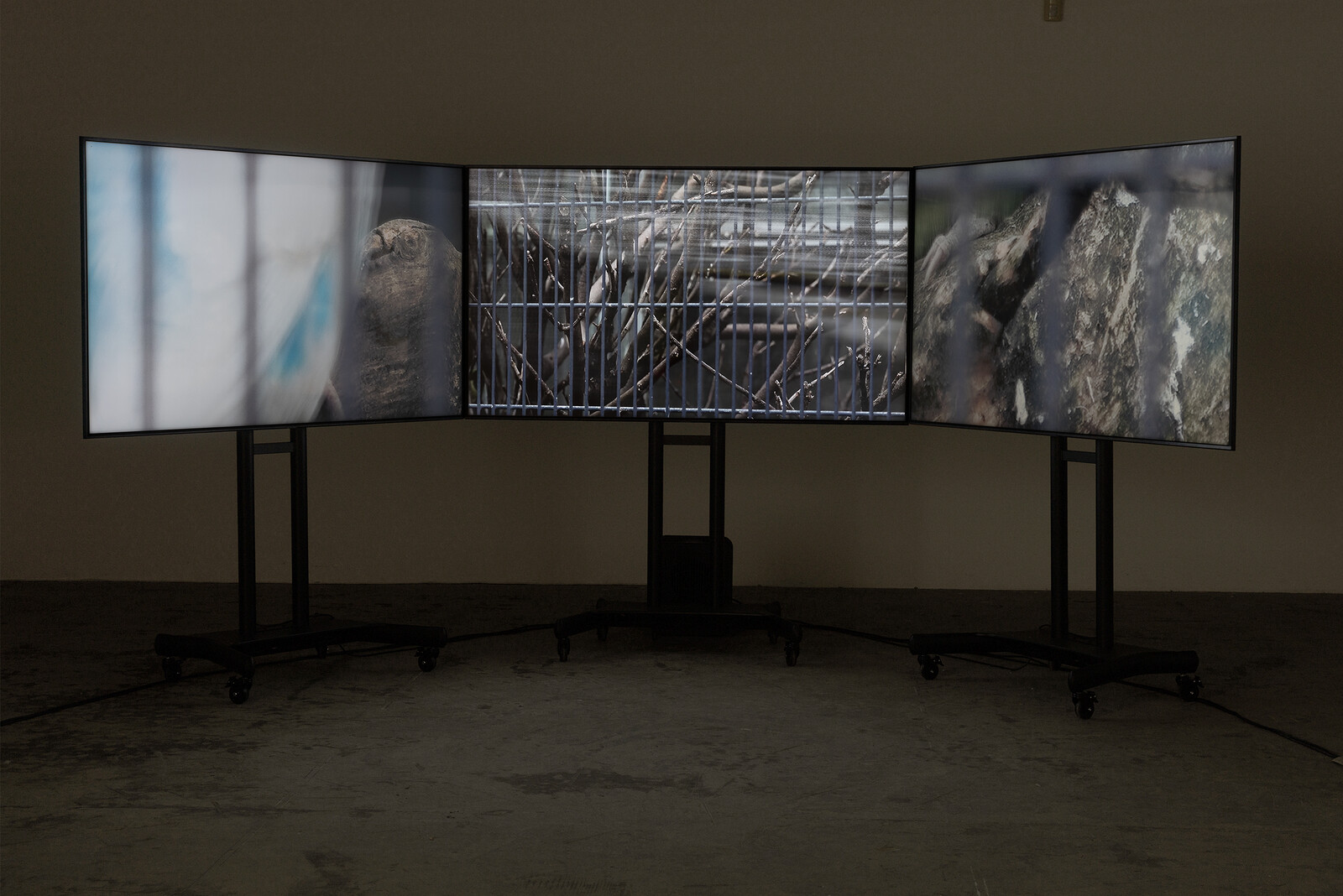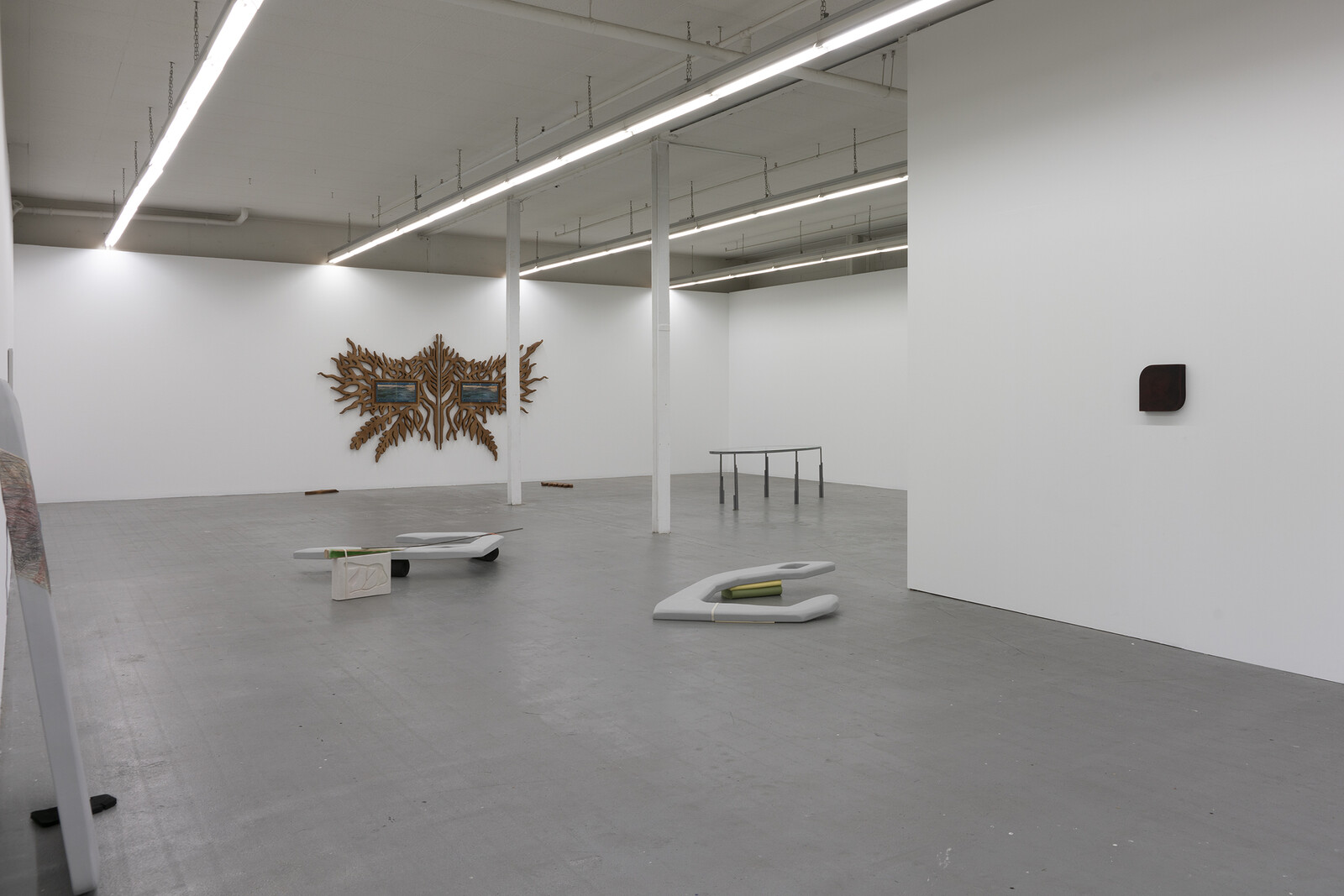October 10–24, 2021
Freilager-Platz 1
4002 Basel
Switzerland
“World’s Rainbow.” What comes to your mind? Imagine a planet (ours or another) embraced by a ring of colors. The clouds that loop around the sphere have pastel colors and they playfully form figures. The winds caressing the oceans produce a calming sound, like an intimate whisper spoken to all animals and humans and plants. One can sense some microscopic life smiling at us. A safe space, a caring space, a joyful space, a trusting space, a common space. This is what this exhibition is. What do these artists have in common? They all graduated this summer. They all pursued their studies during these pandemic times. They all care immensely for each other and have managed to produce a response to a situation that demanded imagination and nerve in the form of an artwork. What was that situation? A health crisis, yes, but also the sense of a large transformation happening in the world of culture. We sense a shift, an end to some formats and forms of interactions, an end to a certain sense of relevance. But we also expect much more in terms of justice, impact, climate, responsibility, language, and care. Do we also experience precarity? We do.
The scarcity of resources and opportunities, the rise of complete control by capital, the indifference toward the impoverishment of the public sector, the segregation of the social… What should one expect in this exhibition, in this rainbow, in this world? Attentiveness. If there is a trait common to all the artworks offered here, it is a delicate approach to the processes that condition perception and touch. The possibility of presence emerges hand-in-hand in the exhibition with the responsibility toward life. The exhibition emerges as a place in which to exercise the senses while thinking about the role that art and artists play helps to maintain a sense of freedom. Freedom… The word is no scream, no code for further violence and bias, the idea is not ideologically presented to you. It is something you feel in your skin, you wish everyone would sense, keep, cherish, fight for even in a time when energy is so low. Oh! I forgot! The works are charged. Yes, they do emanate a force that bonds us to them, creating a flow inside the space that reminds us that a quality of young art is to believe in the continuation of the discipline and to find new forms for it. We should move into a new intersectional world. Artists of different generations having their studios in public schools, in hospitals, in elderly homes… every neighborhood possessing a small place to exhibit, artists-in-residency in myriad residences. Every mall, every supermarket, every garden should include artworks. We should populate the world with rainbows. It is not a fantasy but an antidote to stop the incrementation of the technocratic colonialism that is being superimposed on every process that claims to manage our public and private life. Make space for art, we need it.
We extend our gratitude to the Kunsthaus Baselland, its director Ines Goldbach, and her team for collaborating with us to host our graduation exhibition for the sixth time. We would also like to thank the entire team of the Art Institute for all their support, from conceptually guiding the students to realizing the exhibition.
—Claire Hoffmann and Chus Martínez
Melissa Absarah Torres
Osama Al Rayyan
Samuel Bron
Joaquim Cantor Miranda
Pauline Coquart
Robert Finn Curry
Marie Do Linh
Gerome Gadient
Jeronim Horvat
Maya Hottarek
Lea Isatou Marong
Mio Lena Itschner
Damien Juillard
Marlijn Karsten
Lotte Rose Kjær Skau
Lysann König
Mäschi
Jasper Simeon Mehler
Jennifer Merlyn Scherler
Laurie Mlodzik
Kerstin Mörsch
Anita Moser
Alexandra Münger
Mariana Murcia Arévalo
Leah Nehmert
Jacob Ott
Diogo Pinto
Michael Ray-Von
Sophia Remer
Sergio Rojas Chaves
Kaltrinë Rrustemi
R. Sebastian Schachinger
Mariana Tilly
Thy Truong
Daniela Vollmer
Lola Willemin
Vital Z’Brun
Selina Zurkirch
Claire Hoffmann is head of visual arts programming and curator at Centre culturel suisse in Paris. After her studies in art history and English literature, with stays in Pisa and New York, she worked for Schaulager Basel, Kunsthaus Zurich, and Kunsthaus Langenthal. From 2010 to 2018 she was involved in the nomadic curatorial collective deuxpiece, realizing various exhibitions, for instance, at Copenhagen Contemporary in 2017 and at Kunsthalle Basel in 2016. In cooperation with Katharina Brandl she co-founded the talk-series “Schnittmengen” in 2018. She is also working on her PhD project on Maria Lassnig’s drawings and is member of the Graduate School eikones, University of Basel, having obtained a research fund in Vienna in 2018. In her position at Centre culturel suisse, she has curated numerous solo exhibitions with Pedro Wirz, Mélodie Mousset, Reto Pulfer, and Dorian Sari, among others.
Chus Martínez is head of the Institute Art Gender Nature FHNW Academy of Arts and Design in Basel. She was the expedition leader of “The Current,” a project initiated by TBA21–Academy (2018–2020) and from 2021 she is the artistic director of Ocean Space, Venice, a space initiated by TBA21–Academy. “The Current” is also the inspiration behind Art is Ocean, a series of seminars and conferences held at the Institute Art Gender Nature which examines the role of artists in the conception of a new experience of nature. At the Institute Art Gender Nature she is currently leading the research project “The Womxn’s Factor,” on the role of education in enhancing women’s equality in the arts.
Institute Art Gender Nature, FHNW Academy of Art and Design in Basel is dedicated to visual arts education. We are a public institution with a hundred students divided in a three-year bachelor’s program and a two-year master’s program. At the core of our curricula is the embrace of nature and social justice. Therefore, we have several programs, from international symposia, a series of discursive events entitled “Art Taaalkssss” and an art commission program open to the public. We understand the mission of art and artists as an essential contribution to imagine and experience freedom and the possible futures of the social. Working in friendship with foundations such as TBA21–Academy allows us to enhance our aims and learn from activists and scientist ways of understanding the oceans.






















































